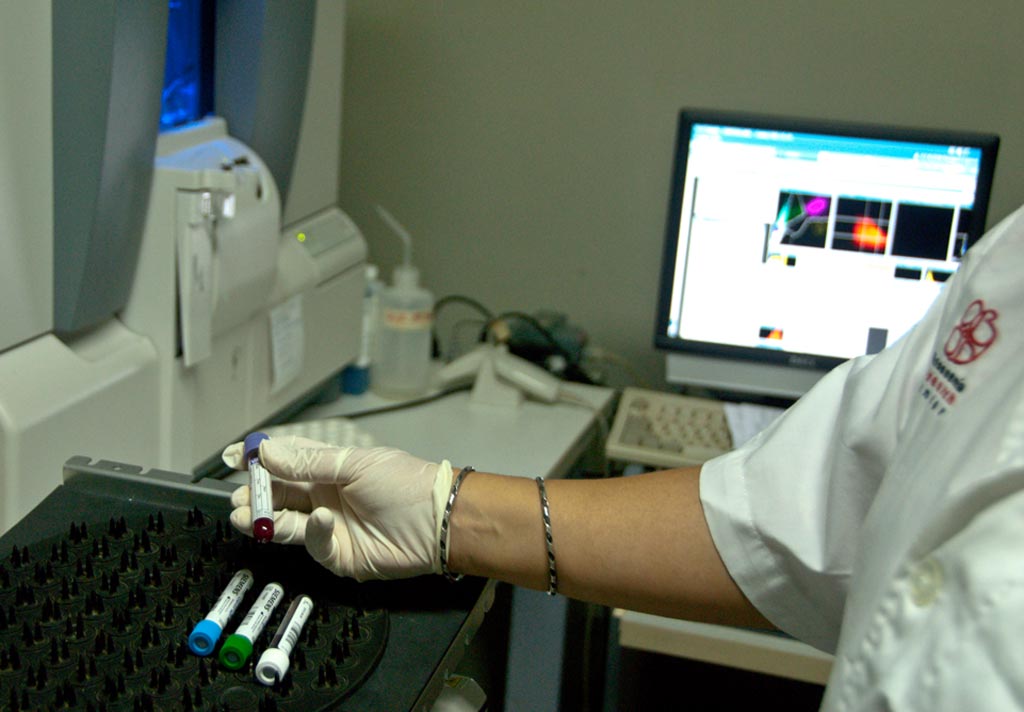Platelet Counts Compared for Thalassemia Patients
By LabMedica International staff writers
Posted on 13 Jul 2017
Platelet count is the component of complete blood count that is used to diagnose quantitative defect in platelets. Accuracy of platelet count is essential for determining bleeding risk in patients and impedance platelet count is widely used in many clinical laboratories for routine patient testing.Posted on 13 Jul 2017
A blood cell or particle fitting the platelet size profile of the platelet distribution curve is counted as a platelet. Although the quality of the impedance method has been continuously improved, inaccurate counting still occurs in many conditions. Abnormal red blood cells (RBCs) with low volume, including microcytes, schistocytes, and spherocytes, have been reported to be the cause of spuriously high platelet counts.

Image: Clinical scientists analyzed the platelet counts of 249 patients with thalassemia, which were compared with the international reference method (IRM) for platelet counting in patients with thalassemia (Photo courtesy of Mahidol University).
Clinical scientists at Mahidol University (Bangkok, Thailand) included in a study 249 patients with thalassemia who visited the outpatient hematology clinic at Siriraj Hospital, Bangkok, Thailand, during the March 2015 to August 2015. Peripheral blood specimens of study participants were collected in dipotassium ethylenediaminetetraacetic acid tubes and analyzed for platelet count by various methods within four hours after phlebotomy.
The fully automated Sysmex XN-3000 analyzer was used to measure platelet counts for the evaluated measurement methods in the study. To investigate the performance of automated platelet counts, including impedance (PLT-I) and optical fluorescent (PLT-O and PLT-F) methods, were compared with the international reference method (IRM) for platelet counting in patients with thalassemia. Red blood cell measurements were also analyzed on the Sysmex XN-300.
The team included specimens with platelet counts ranging from 31 × 103/μL to 932 × 103/μL and most of the patients were diagnosed with thalassemia major. Correlation between PLT-I and IRM was lower than that of the other methods in overall patients. PLT-O and PLT-F were correlated to IRM when classifying patients according to clinically significant platelet ranges. All automated methods had acceptable sensitivities; however, specificity of PLT-I was low for diagnosis of thrombocytopenia. High RDW-CV (red blood cell distribution width–coefficient of variation) was an independent factor of inaccurate PLT-I measurement.
The authors concluded that among the evaluated methods, PLT-I was the method least correlated to IRM, with PLT-O and PLT-F comparable to IRM in patients with thalassemia. Optical platelet counts and careful blood smear examination are recommended alternative platelet counting methods, depending on the clinical setting. The study was published in the June 2017 issue of the journal Archives of Pathology & Laboratory Medicine.
Related Links:
Mahidol University













